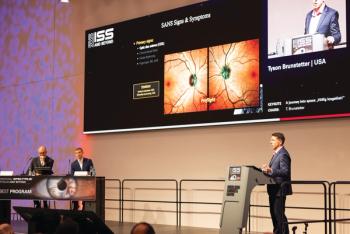
Is there hope for patients unable to receive a donor cornea?
I was delighted with the results. My patient's subsequent visits at 12 and 18 months post surgery were equally encouraging as endothelial cell count and corrected vision remained unchanged
Daljit Singh MD from Amritsar, India - a country that suffers from a severe lack of donor corneas - has developed a technique that could offer an alternative treatment approach where donor corneas are not available. Early results of this new procedure have been promising and were presented at the 2005 American Society of Cataract and Refractive Surgery meeting.
Having extensively studied the lympatics within and around the cornea and conjunctiva, Singh theorized that, by relieving corneal oedema through the creation of fine corneal incisions or pits, most eyes with corneal decompensation could be treated without requiring a corneal transplant. Singh has put his theory into practice and is delighted with the results.
"I examined small corneal abscesses and was stunned at the speed with which the myriads of inflammatory cells appeared and disappeared from the inflamed areas," added Singh. Having established the presence of a generous network of channels throughout the cornea, Singh concluded, "at the periphery of the cornea this network is intimately linked with the ends of vascular capillaries and this gives rise to the activation of rapid inflammatory cellular responses. This explains the rapid movement of corneal infections."
"I believe that wherever there is fluid, there is fluid movement and the cornea is no exception. The endothelium most likely regulates the fluid closest to it and the rest moves forward, irrigates the cornea from inside out and moves out of the anterior corneal layers into the pericorneal lymphatics. The oxygen, in contrast, travels from the surface inwards," postulated Singh. "Corneal oedema reduces both of these processes and inflicts further corneal damage," he concluded.
Testing the theory
Singh suggested that, by making corneal pits, thus speeding up fluid flow from the deep to the superficial layers of the cornea, a further outward drainage of moving fluid by the lymphatics could reduce corneal water logging.
Singh's 85-year old patient had only one eye, which had received cataract surgery and iris claw lens implantation 18 years earlier. The patient urgently needed a donor cornea, however because of a lack of donor availability and the patient's inability to pay for the treatment, Singh suggested his alternative therapy (Figure 2).
Newsletter
Get the essential updates shaping the future of pharma manufacturing and compliance—subscribe today to Pharmaceutical Technology and never miss a breakthrough.












































